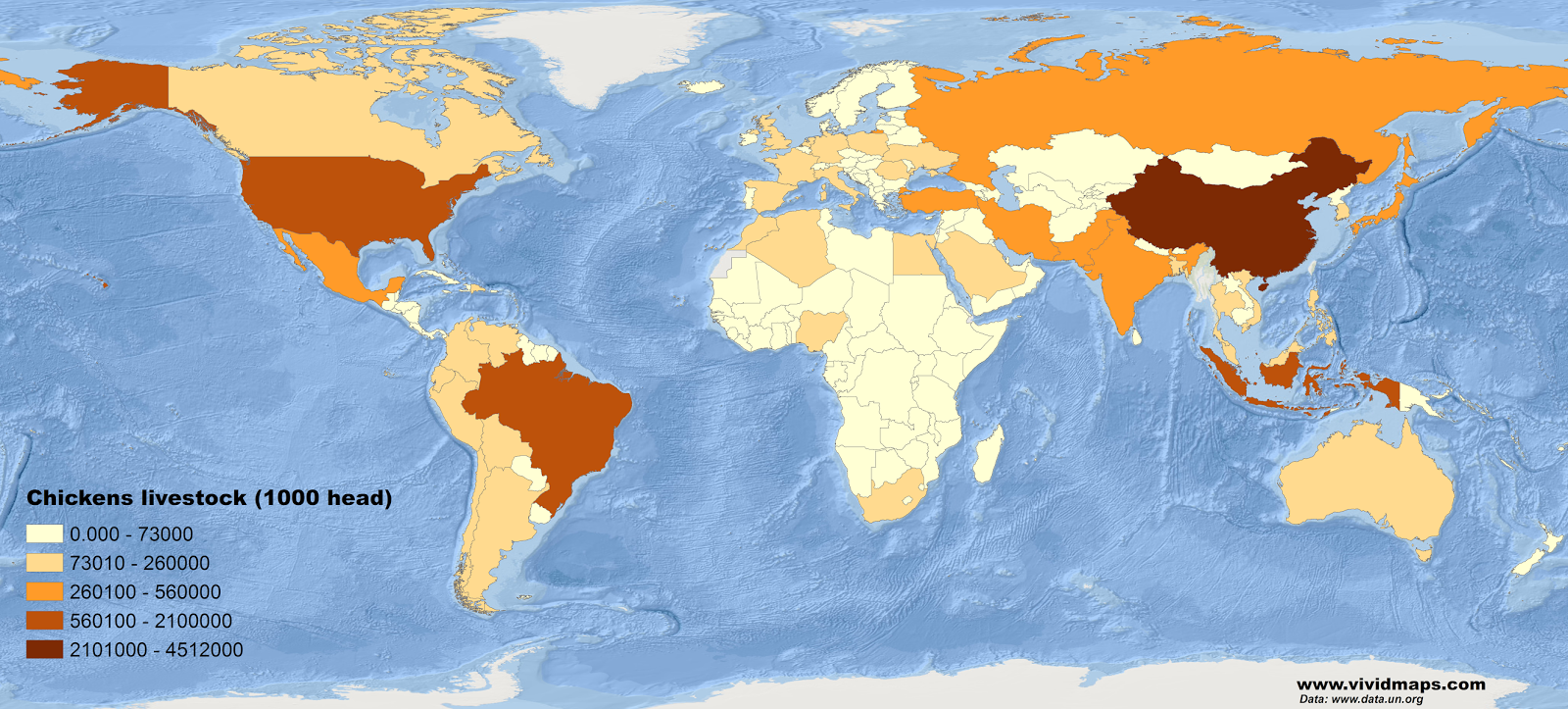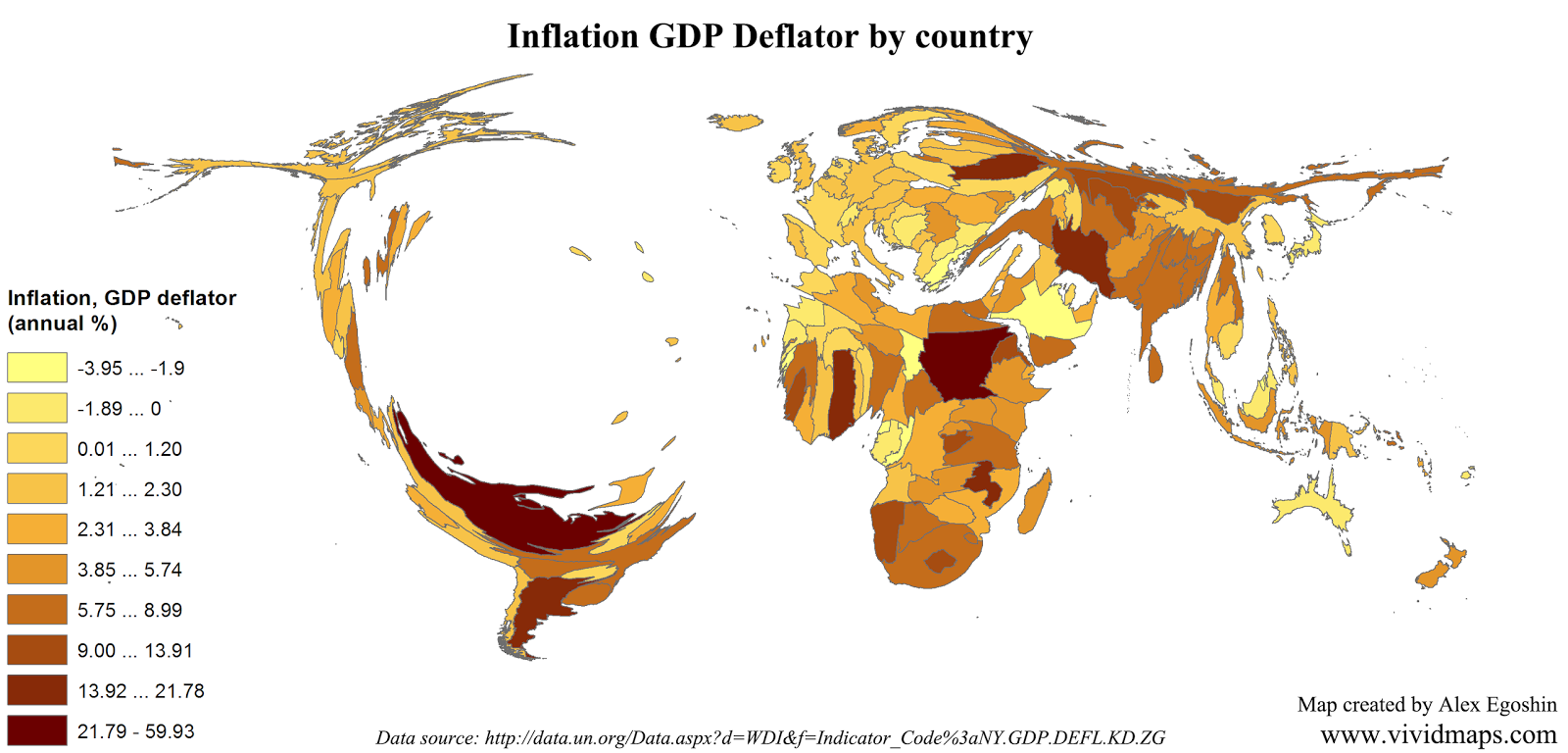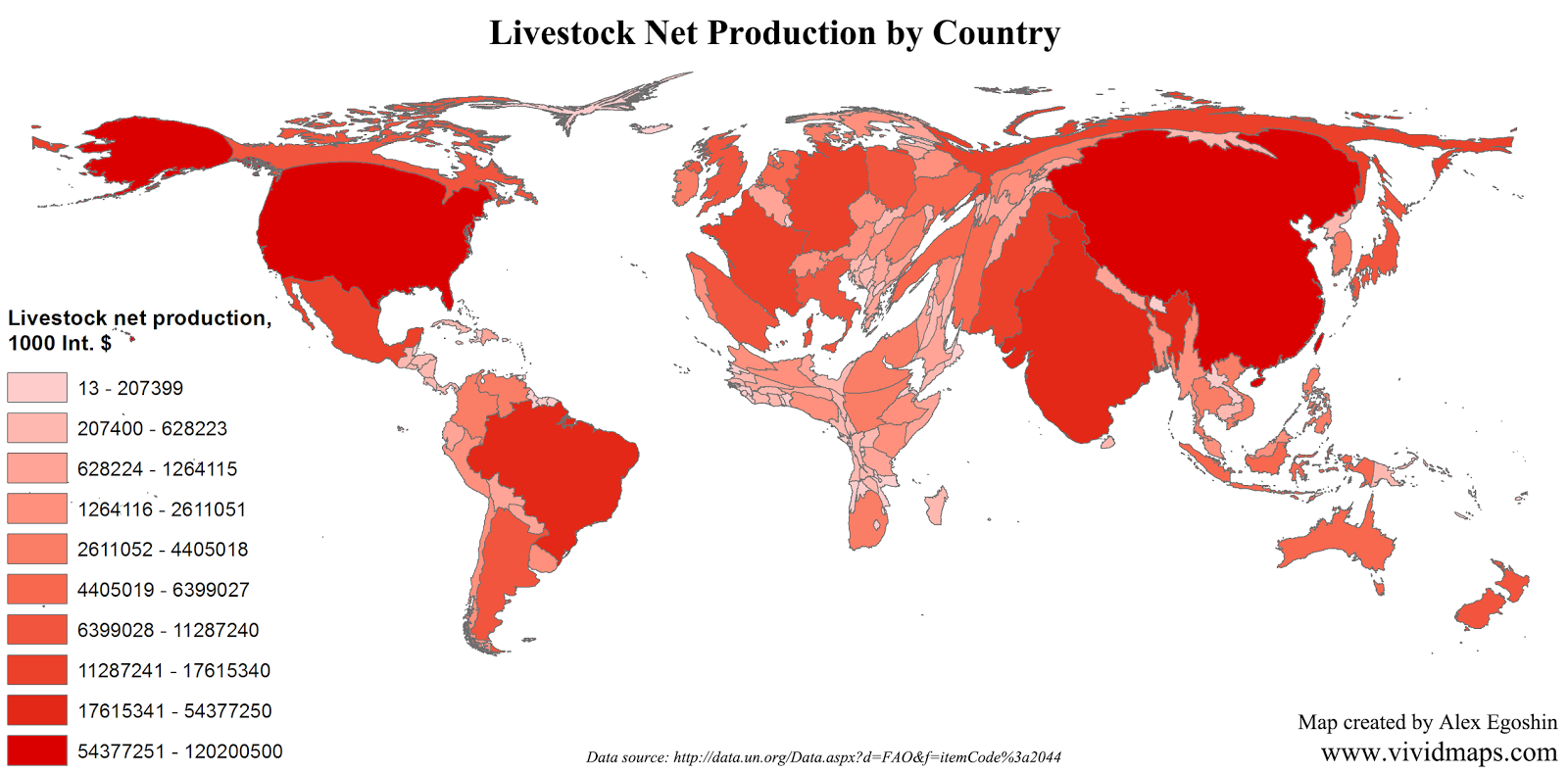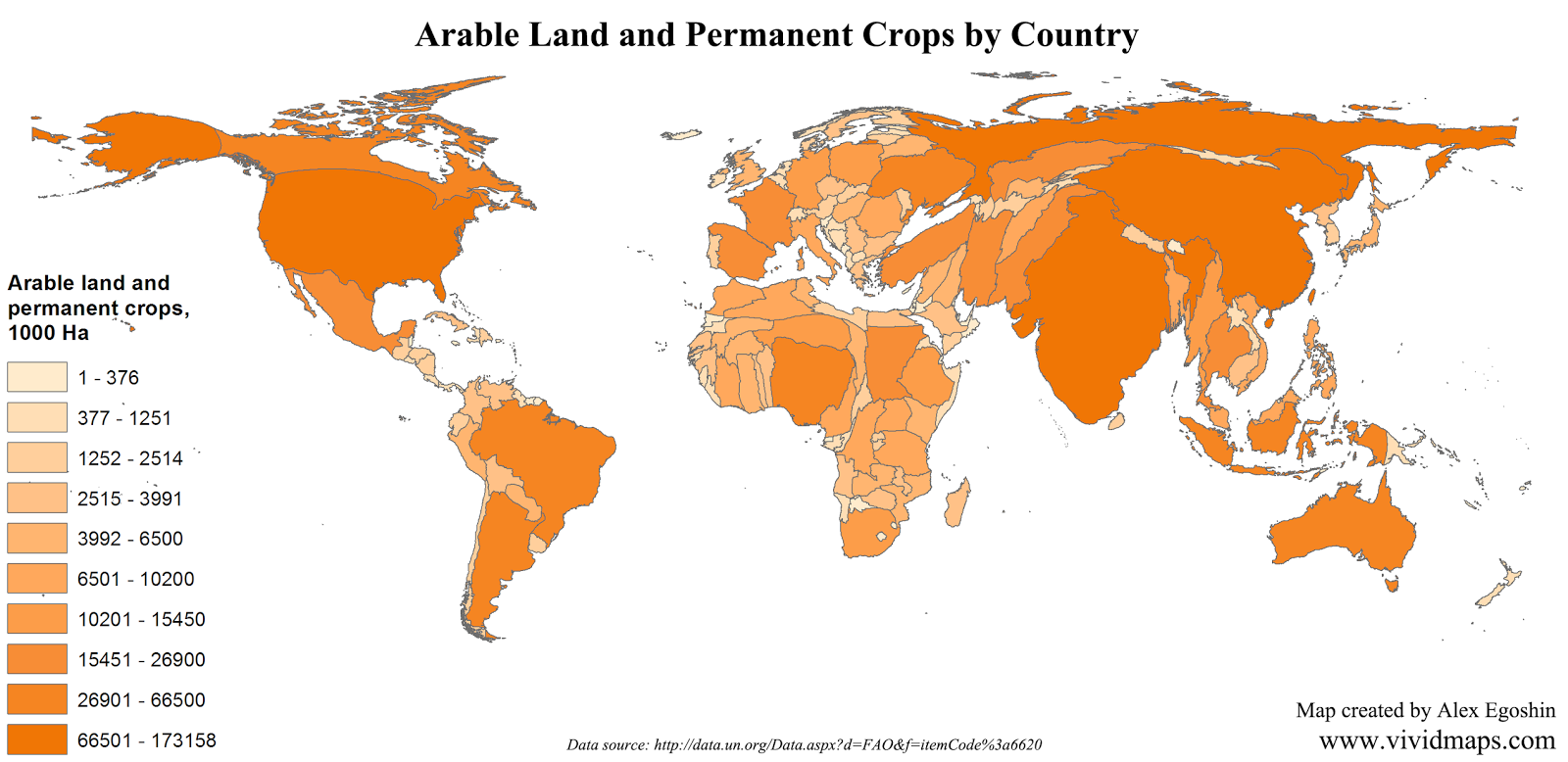Which country has the most palm species?
Table of Contents
- Number of palm species by country
- Top 10 most common palm genera by the number of countries in which they occur
- Top 10 most widespread palm species by the number of countries in which they occur
- Palm Species Interactive Map
- Top 10 palm genera by the number of occurrence records
- Top 10 palm species by the number of occurrence records
Palms are perennial flowering plants of the Arecaceae family. Currently, 181 genera with about 2.6 thousand palm species. Most palm trees are characterized by their broad, compound, evergreen leaves (fronds) at the top of an unbranched trunk. But palm species are pretty diverse.
Quindío wax palm (Ceroxylon quindiuense) can grow to a height of 50 meters (164 feet), while dwarf palmetto (Sabal minor) may only reach about 1 meter (3 feet) tall. The Coco De Mer Palm has the largest seeds of any plant on Earth. The seeds can be as large as 30 centimeters (12 inches) long and weigh up to 18 kilograms (40 pounds).
Palm trees can grow fast. A Fish Tail Palms can grow to 10 meters (~30 ft) in as little as 6 years when climatic conditions are optimal.
Palms flourish mainly in moist and hot climates of the tropics and subtropics. Their diversity is incredibly high in wet, lowland forests (2/3 of palm species inhabit humid moist forests). South America, the Caribbean, South Pacific, and Asia areas have a high concentration of palm species. Only almost 130 palm species naturally grow beyond the tropics, mainly in humid subtropical climates, on hillsides in southern Asia, and along the rimlands of the Mediterranean Sea.
Palms appeared about 80 million years ago and dispersed right across the globe. Competition from more contemporary trees has disposed of palms from many of the ecological niches they once inhabited, but they are still prevalent in warmer climates.
In the northern hemisphere, the northernmost native palm is Chamaerops humilis, which reaches 44°N latitude along the seaside of Liguria in Italy. In the southern hemisphere, the southernmost palm is the Rhopalostylis sapida, which reaches 44°S on the Chatham Islands with an oceanic climate.
But the gardening of some palm species is possibly north of subtropical climates and some higher latitude localities such as Ireland, England, and Scotland.
I decided to find out which countries have the most significant number of palm species. To do this, I downloaded data (716583 records from 657 published datasets) on the distribution of palm trees from the Global Biodiversity Information Facility (GBIF) website.
GBIF.org (10 August 2022) GBIF Occurrence Download https://doi.org/10.15468/dl.d9zs8n
Unfortunately, despite many observations, the data cannot be called complete. The species diversity of palms in small countries is incomplete. And in contrast, countries with a developed system of botanical gardens can boast a great variety of palm species. Thus, the United States ranks 7th in the list of countries with the highest diversity of species of palm trees. Even though initially in the U.S., there were 14 native species of palm trees.
Next, I used Python to determine which country has the most palm species.
Number of palm species by country
Colombia has the most significant number of tree species than any other country. This tropical country’s extraordinary biodiversity is likely because of its sweet spot presence in the conjunction of North and South America, the Pacific, and the Caribbean, along with varying altitudinal zones.
As a result, in Colombia, you can find the World’s tallest palm species – an Andean wax palm (Ceroxylon quindiuense) that surpasses heights of 50 meters (150 feet) even up to 60 meters (200 feet) rarely, maybe 70 meters (230 feet) maximum. In the Cocora valley, west of Bogota, the montane forests of the Quindio wax palm, as it is known locally, make this place a popular traveler attraction.
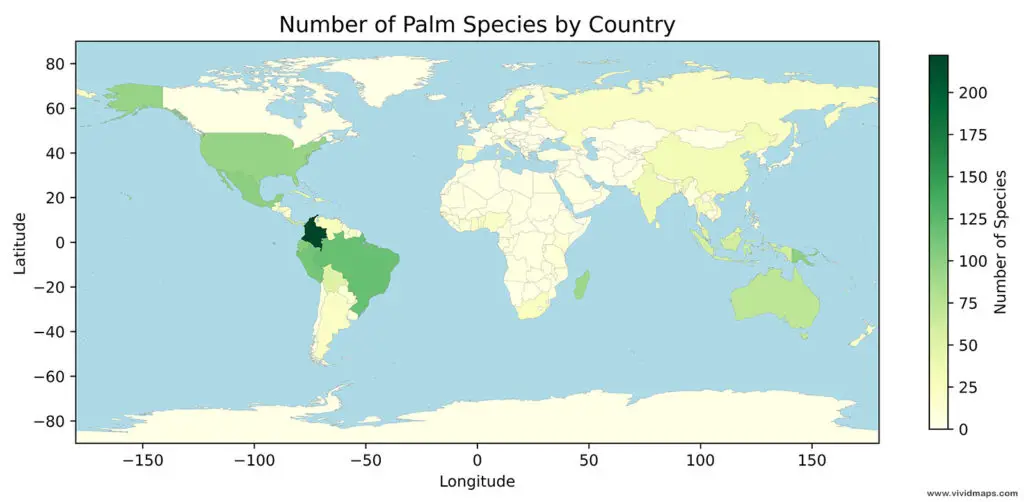
Brazil ranks second on the list of countries with the highest species diversity of palm trees, just slightly ahead of Peru.
Top 20 countries with the most palm species
| Rank | Country | Number of palm species |
|---|---|---|
| 1 | Colombia | 222 |
| 2 | Brazil | 119 |
| 3 | Peru | 113 |
| 4 | Ecuador | 104 |
| 5 | Papua New Guinea | 101 |
| 6 | Mexico | 100 |
| 7 | United States | 95 |
| 8 | Madagascar | 91 |
| 9 | Australia | 72 |
| 10 | Costa Rica | 68 |
| 11 | Indonesia | 60 |
| 12 | Panama | 58 |
| 13 | Malaysia | 53 |
| 14 | Bolivia | 53 |
| 15 | Cuba | 38 |
| 16 | Puerto Rico | 35 |
| 17 | India | 35 |
| 18 | Trinidad and Tobago | 33 |
| 19 | China | 33 |
| 20 | Singapore | 32 |
Top 10 most common palm genera by the number of countries in which they occur
Phoenix is the most widely distributed genus of palm, comprising 14 palm species native to a range beginning from the Canary Islands in the west across northern and central Africa. Some Phoenix palm species, particularly date palm (Phoenix dactylifera) and Canary Island date palm (Phoenix canariensis), have become widely naturalized in other parts of our planet.
| Rank | Genera | Number of countries |
|---|---|---|
| 1 | Phoenix | 236 |
| 2 | Cocos | 133 |
| 3 | Bactris | 132 |
| 4 | Dypsis | 128 |
| 5 | Chamaedorea | 109 |
| 6 | Geonoma | 109 |
| 7 | Livistona | 74 |
| 8 | Calamus | 73 |
| 9 | Washingtonia | 72 |
| 10 | Caryota | 70 |
Top 10 most widespread palm species by the number of countries in which they occur
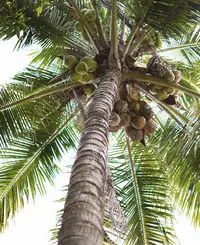
1. The coconut tree (Cocos nucifera) is the only remaining species of the genus Cocos. They are omnipresent in tropical seaside regions and the cultural icons of the tropics. Coconut trees grow up to 30 meters (100 feet) tall and can yield up to 75 fruits annually, though fewer than 30 is more usual. Palm fruits are ellipsoid, 300–450 millimeters (12–18 inches) in length, and 150–200 millimeters (6–8 inches) in diameter. Coconut palm fruits float effortlessly and have been scattered widely by ocean currents and humans throughout the tropics.
The coconut tree supplies food, fuel, cosmetics, folk therapy, and construction materials. Indonesia, the Philippines, and India produce about 75% of the global supply of coconuts.
Initially native to Southeast Asia, European sailors introduced coconut trees to the Americas during the colonial era.
According to GBIF data, this palm species can be found in 131 countries.
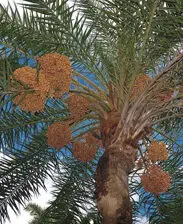
2. Date palm (Phoenix dactylifera) trees reach up to 30 meters (100 feet). The palms of this species have been planted in the Middle East and the Indus Valley for thousands of years. There is archaeological proof of Date palms cultivation in Arabia from the sixth millennium BCE. The spot of origin of the Phoenix dactylifera is questionable because of its long cultivation. According to some references, it likely originated from the Fertile Crescent region (Egypt – Mesopotamia while others declare they are native to the Persian Gulf region or even western India. Fossil evidence shows that this palm species has survived for at least 50 million years.
Nowadays, date palm is broadly cultivated for its tasty sweet fruits across northern Africa, the Middle East, and South Asia and is naturalized in many tropical and even subtropical regions of the globe.
The total annual world production of dates amounts to 9 million tons, led by Egypt, Saudi Arabia, Iran, and Algeria, with 60 percent of the global total combined. Phoenix dactylifera palms take 4-8 years after cultivating before they will provide fruits. Mature date palms can give 70–140 kilograms (150–300 pounds) of date fruits per harvest season. Date fruits contain, on average, 64% of sugar by mass when dried.
Currently, this palm species is found in 71 countries worldwide.
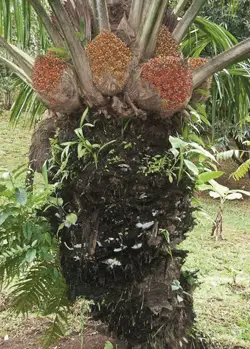
3. Oil palm (Elaeis guineensis) grows to 20 meters (66 feet) tall. The leaves are pinnate and reach 3–5 meters (9.8–16.4 ft) long.
The palm fruit is reddish, about the size of a large plum. Each fruit comprises an oily, fleshy outer layer with a single seed. Every bunch of rope fruit weighs between 5 and 30 kilograms (11 and 66 lbs). Oil palms can provide much more oil per unit of land area than most other oil-producing plants (4.5 times more than rapeseed and 9 times more than soy). For each hectare of Elaeis guineensis gathered year-round, the yearlong production averages 20 tonnes of fruit yielding 4 tonnes of palm oil and 0.75 tonnes of seed kernels producing 0.5 tonnes of high-quality palm kernel oil, as well as 0.600 tonnes of kernel meal. Human use of oil palms may mark as far back as 5 thousand years in Egypt.
Oil palm is native to west and southwest Africa, specifically the region between Angola and the Gambia. The species is also now naturalized in many tropical countries on our planet.
Today, the species is found in 54 nations.
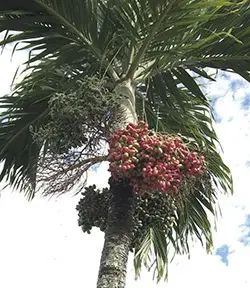
4. Manila palm (Adonidia merrillii) is a palm tree species native to the Philippines. This palm was planted for centuries in South East Asia before naturalizing in the West Indies and becoming popular in the West. It is generally known as the “Christmas palm” because its fruits become bright scarlet and be that color in winter.
This palm species is generally relatively small and thin, usually reaching 8 meters (25 ft) in height. Most palm trees hold 5-12 fronds.
Manila palm is broadly planted in gardening and effortlessly grows in tropical places such as Hawaii and southern Florida. It is one of the most typical landscape palms in the south part of the Florida peninsula.
The Adonidia merrillii is typically planted indoors in hotels and other high-end facilities because it adjusts to lower light requirements. They are self-pruning palm species and need little to no care.
Fruits of the Manila palm are sometimes used as a replacement for the betel nut in preparing buyo for chewing.
Nowadays, this palm species also can be found in 54 countries.

5. Golden cane palm (Dypsis lutescens) is a palm species native to Madagascar and naturalized in other islands of the Indian Ocean (the Andaman Islands, Réunion), Central America, the Caribbean Islands, and the Canary Islands.
Golden cane palm grows 6–12 meters (20–39 feet) in height. Many stems develop from the base. The pinnate fronds are arched, 2–3 meters (6.6 – 9.8 feet) long, with 40-60 pairs of leaflets.
Because the leaves bend upwards in multiple stems to make a butterfly look, the palms of this species are also called “butterfly palms.” Fronds bear panicles of yellow flowers in the summer.
It is cultivated as an ornamental plant in parks in tropical and subtropical zones.
Golden cane palms in the open ground can be seen in 49 countries worldwide.
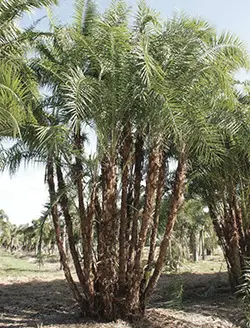
6. Senegal date palm or the wild date palm (Phoenix reclinata) is a species of flowering plant native to tropical Africa, Madagascar, the Arabian Peninsula and the Comoro Islands. Today is naturalized in the Caribbean region and Florida.
Senegal date palm produces multiple stems from 7.5 to 15 meters (25 – 49 feet) in height and 30 cm (6 inches) in width. Pinnate foliage reaches 2.5 to 4.5 meters (8 – 13 feet) in length and 0.75 meters (2.5 feet) in width. Leaves on 30 centimeters (12 inches) petioles with long, acute spines at the base.
Phoenix reclinata grows edible, oblong orange fruits at 2.5 centimeters (1 inch) in diameter, borne in massive clusters. In addition, the palm tree heart can be eaten as a vegetable. In Botswana, sap is used to make palm wine. The roots contain tannin and are used to create a brown pigment. Senegal date palm also provides edible gum. The wood is lightweight and not practical.
The species is found in 46 nations.
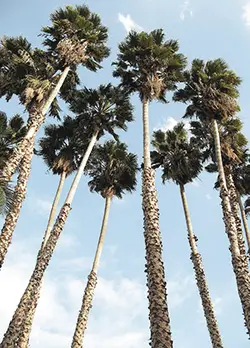
7. Mexican washingtonia, or skyduster (Washingtonia robusta), is a palm tree native to the Baja California peninsula and a limited part of Sonora in northwestern Mexico. It is naturalized in U.S. southern states: California, Florida, Texas, Hawaii, Texas, some European Countries (Spain, France, Italy), the Middle Esat (Lebanon, Israel, Jordan, Qatar), and Northern Africa (Morocco).
Skyduster grows to 25 meters (82 feet) tall, infrequently up to 30 meters (98 feet). The leaves of the palms have a petiole up to 1 meter (3.3 feet) long and a palmate fan of leaflets up to 1 meter (3.3 feet) long. The 7-millimeters (0.7 inches) in diameter thin-fleshed fruits are edible.
Like the closely related Washingtonia filifera (California washingtonia), it is grown as an ornamental tree. But Mexican washingtonia grows faster, taller, and less cold hardy than the California washingtonia, hardy to approximately −8 °C (18 °F).
A field study of Skyduster palm in its native environment on the Baja California peninsula showed that its potential longevity might surpass five hundred years.
Mexican washingtonia grows in 44 countries around the world.
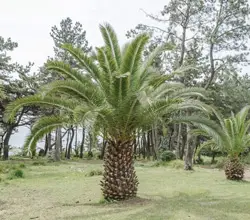
8. The Canary Islands date palm (Phoenix canariensis) is large, 10–20 meters (33–66 feet) tall, occasionally growing to 40 meters (131 feet), slowly growing palm, native species to the Canary Islands off the shore of Morocco. Phoenix canariensis palm with 10 meters (30 feet) of trunk is roughly 60 years of age.
The leaves, commonly about 70 to 130, are pinnate, 4–6 meters (13–20 feet) long. The oval fruit size is 2 centimeters (0.79 inches) long and 1 centimeter (0.39 inches). The fruit pulp is edible but not the finest of dates. In the Canary Islands, the sap of this Phoenix canariensis is used to produce palm syrup.
The Canary Islands date palm is commonly grown in Mediterranean and subtropical climates. But there are several examples of cultivated Phoenix canariensis in high-latitude oceanic climates, such as Ireland and the United Kingdoms. The palm can be grown where temperatures seldom fall below −10 or −12 °C (14 or 10 °F) for long periods.
Phoenix canariensis is recorded as invasive in Florida, seaside southern California, Australia, and New Zealand.
This species of palm can be found in 40 countries around the world.
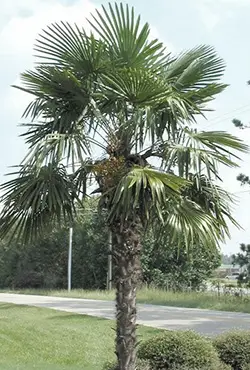
9. The Chinese windmill palm (Trachycarpus fortunei) is a hardy evergreen palm species native to regions of China, Japan, India, and Myanmar.
The Chinese windmill palm has a coarse texture growing to 12–20 meters (39–66 feet) tall. Leaves are 1.4–1.9 meters (4.7-6.3 feet) long.
Trachycarpus fortunei is one of the hardiest palms.
This palm species has been cultivated in China and Japan for thousands of years for its coarse but solid leaf sheath fiber, used for making rope, sacks, and other coarse cloth where great strength is essential.
The Chinese windmill palm is cultivated in parks worldwide in warm temperate and subtropical climates. Its resilience to cool summers and cold winters makes it highly adored by palm enthusiasts, gardeners, and landscape designers. It is cultivated well in the United Kingdom, France, Belgium, The Netherlands, southern and western Germany, western Poland, and southwest Russia.
Trachycarpus fortunei is cultivated in 39 countries around the world.
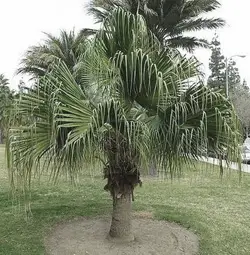
10. The Chinese fan palm or fountain palm (Livistona chinensis) is east Asia’s subtropical palm tree species. It is native to southeastern China, including Taiwan and southern Japan. In Japan, two significant populations inhabit islands near the coast of Miyazaki Prefecture, Aoshima and Tsuki Shima.
The Chinese fan palm can attain heights of about 9 to 15 meters (30 to 50 feet). The leaves are fan-shaped.
The palm is planted in many countries as a decorative tree in gardens and arboreta.
This plant can become an invasive species in some ecosystems. Fountain palm is also easily naturalized in South Africa, the French overseas territory Réunion, the island of Mauritius, Java, New Caledonia, Micronesia, the Andaman Islands, Antilles, Bermuda, Hawaii, and Florida.
Livistona chinensis is found in 36 nations.
Palm Species Interactive Map
Below is the interactive map of palm species by country.
Top 10 palm genera by the number of occurrence records
Geonoma is genera number one by the number of occurrence records in the GBIF database.
This palm genus is one of the largest in the Neotropics. Its 64 palm species are spread in tropical Central and South America (from Mexico and Haiti in the north to Paraguay in the south); two species are discovered in the Lesser Antilles. The palm species of this genus are mainly small to medium by size and grow under the canopy of tropical forests.
| Rank | Genera | Number of occurrence records |
|---|---|---|
| 1 | Geonoma | 97258 |
| 2 | Oenocarpus | 62996 |
| 3 | Bactris | 55365 |
| 4 | Attalea | 43556 |
| 5 | Euterpe | 36922 |
| 6 | Lepidocaryum | 35993 |
| 7 | Astrocaryum | 34258 |
| 8 | Prestoea | 24911 |
| 9 | Cryosophila | 22318 |
| 10 | Socratea | 21056 |
Top 10 palm species by the number of occurrence records
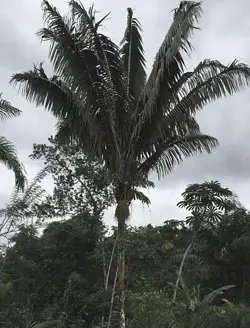
1. Patwa (Oenocarpus batata) [52802 occurrences] is native to the tropical rainforests of South America and is abundant in the wet regions at elevations of less than one thousand meters (3.3 thousand feet). Its distribution extends from Panama to the Amazon basin (Colombia, Venezuela, Brazil, Brazil, the Guianas, Bolivia, Ecuador, and Peru).
In Western Amazonia, Oenocarpus batata is one of the top three palm species in abundance and frequency.
The palm species has a smooth stem 10–25 meters (33–82 feet) in height and 20–30 centimeters (8–12 inches) in diameter.
Fruits of Oenocarpus batata are used for food, cosmetic, and pharmaceutical purposes. Drupes of the fruits contain 8–10% oil.
Traditionally, Amazonian societies have collected the fruits to prepare drinks and extract oil цршср used in fried foods. The leaves of the Patwa have been used to make baskets and construct temporary housings.
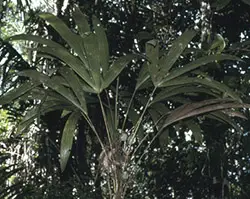
2. Poktamui (Lepidocaryum tenue) [35993 occurrences] is the lone species of the monotypic genus Lepidocaryum from South America.
At only 2.5 centimeters (1 inch) in width, the clustering trunks reach no higher than 3.5 meters (11 feet). The little, reduplicated palmate leaves are on 60 centimeters (24 inches) petioles.
Poktamui is dioecious, with male and female flowers on different plants, both with inter-foliar inflorescences, branched into two superficially similar orders. Female palm trees form oblong or oval fruit, mostly with one seed, red to brown and blanketed in scales.
Dispersed throughout Brazil’s Amazon area, north to Venezuela, and the wetter regions of Colombia, Guyana, and Peru, it is an undergrowth palm observed in lowland rainforest. The local population often used the leaves in thatch. The local people often use the leaves in thatch.
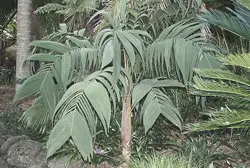
3. Geonoma macrostachys [27996 occurrences] is a small palm with 1.3 meters (3.3 feet) tall trunks about 0.7 centimeters (0.7 inches) in diameter, compound, and broad leaves roughly 9 (3-15) per trunk.
Geonoma macrostachys is the most variable pal species in the whole genus and the most problematic taxonomically.
This palm species is spread broadly in central and western Amazonia.
Palm leaves are an essential source of roof thatch for rural communities in many parts of the tropics. As a result, some wild populations are declining because of over-harvesting.
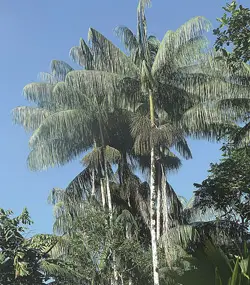
4. Mountain cabbage palm (Euterpe precatoria) [24993 occurrences] is a tall pinnate-leaved palm native to Central and South America.
Trunks are usually 3–20 meters (10-66 feet) tall and 4–23 centimeters (1.6-9 inches) in diameter. It is also considered one of the most frequent trees in Amazonia, though it accounts for just over 1 percent of all trees (5 billion out of 390 billion) in the Amazonian region.
As well as the edible fruits, this Mountain cabbage palm is a source of prized hearts of palm trees.
The fruits are used to make beverages; the stems are used for construction, and the roots are used medicinally.
During the 1990s, Euterpe precatoria was heavily harvested for palmetto in Peru and Bolivia, but production declined in the early 2000s because of over-harvesting.
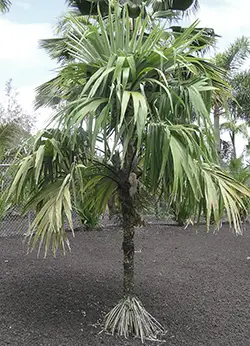
5. Rootspine palm (Cryosophila stauracantha) [22277 occurrences] is native primarily to countries of Central America (Mexico, Belize, Guatemala, and Honduras, where it grows in the pluvial forests from sea level up to about 600 meters altitude.
The palm tree has a trunk about 9 meters (3- feet) tall and of 6-12 centimeters (2-5 inches) in diameter, greyish, surrounded by thorny adventitious roots, commonly bent downwards, that at the base root form a sort of support cone up to 30 centimeters (12 inches) tall.
The almost circular leaves are about 1,8 meters (5.9 feet) in diameter, deeply divided into many segments united in groups of 2-4.
The local populations use the stems in the structures and the leaves as a cover for makeshift shelters. The crushed leaves submerged in water temporarily paralyze the fishes, thus simplifying their seizure.
Rootspine palm has impressive ornamental features. The species is usable in parks of the tropical, subtropical, and milder warm temperate climate regions, where temperatures about 0°C (32°F) are very short-lasting.
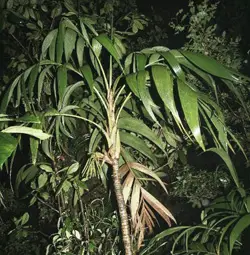
6. Geonoma deversa [21244 occurrences] is the most wide-ranging palm species in the genus of Geonoma, growing from Belize and Guatemala in the north to Brazil and Bolivia in the south of the Americas.
It is a small clustering palm 0.5-5.0 meters (1.6-16.4 feet) tall with stems 0.5-1.8 centimeters (0.2-0.7 inches) in diameter.
Leaves 6-18 per stem, commonly undivided or irregularly pinnate.
The leaves are frequently harvested as a source of thatch, especially in Peru and Bolivia. The plant is also used to provide a source of salt.
Geonoma deversa is growing understory of lowland to pre-montane rain forests, usually at elevations up to 600 meters (1969 feet), predominantly on well-drained soils, infrequently in seasonally inundated areas.
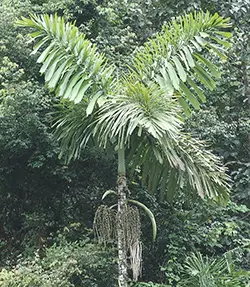
7. Iriarte deltoidea [20490 occurrences] is the most common tree in Nicaragua, the southern part of Bolivia, and a significant portion of the Western Amazonian basin.
These palm species are canopy trees growing to 20–35 meters (66-115 feet) tall. Iriarte deltoidea is effortlessly identified by the prominent bulge in the center of its stem and the stilt roots, which form a dense cone up to 1 meter (3 feet) in diameter at the bottom. The leaves are up to 5 meters (16 feet) long and pinnate. The fruit is a 2-cm diameter drupe, mainly spread by toucans and bats.
Humans also eat fruits, and the palms are used for construction and handicraft.
The timber of this palm species is greatly prized for housing and furniture. Many South American nations export Iriartea deltoidea wood to the U.S.
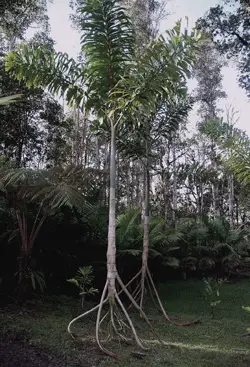
8. The walking palm (Socratea exorrhiza) [19913 occurrences] is a palm native to tropical Central and South American rainforests. It can grow to 25 meters (82 feet) high, with a stem diameter of up to 16 cm (6.3 inches).
There is much speculation about the function of this palm’s unusual roots.
Some scientists suggested the roots allow the palm to “walk” away from the place of germination if another tree goes down on the seedling and knocks it over. If such a casualty happens, the palm produces new stilt roots and can right itself, the initial roots rotting away.
Other scientists argue stilt roots allow the walking palm to grow upwards to reach light without increasing the stem’s diameter. The stilt roots make the palm’s trunk more stable, allowing it to grow taller and faster. Other researchers consider that these unusual allow the palm to colonize areas with many dead logs.
Varies species of epiphyte have been found growing on the Socratea exorrhiza. Beetles pollinate the palm, and different organisms eat their seeds.
The trunk of the walking palm is used in building houses and producing hunting spears. The leaves are used to construct hut roofs. The palm fruits are edible.
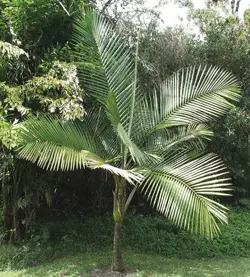
9. Prestoea acuminata [17743 occurrences] is the largest species in the genus and is often a noticeable element of montane forests in Central America and the Andes.
Stems solitary or growing in clumps 6-15 meters (20-49 feet) tall, 4-20 centimeters (1.6-7.9 inches) in diameter, usually with a cone of roots at the base. Leaves 4-10 per crown, spreading or erect, forming a partial crownshaft, 26-80 centimeters (10-31 inches) long. Fruits oval 1-1.2 centimeters (0.4-0.5 inches) in diameter.
Prestoea acuminata is a palm species of palm tree native and widespread in the Antilles, Central America, and in the Andes from Colombia to Bolivia.
It was onetime commonly harvested in Ecuador for palmito. However, the palm is now uncommon because of over-harvesting and is no longer commercially harvested on a massive scale.
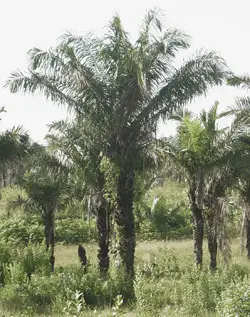
10. Urucuri palm (Attalea phalerata) [14934 occurrences] is native to southern and western Amazonia (Bolivia, Brazil, Paraguay, Peru). It is the most frequent palm tree on the Pantanal.
Urucuri palm is of ecological importance and grows in many types of rainforest. Flowering takes place throughout the year and fruiting twice a year. Agoutis, caracaras, tapirs, rheas, agoutis, and spiny rats disperse the palm seeds. The sheaths of the palm trees often accumulate the seeds of other plants, which sometimes sprout there and develop as epiphytes on the Urucuri palm. Attalea phalerata is commonly pollinated by sap beetles and weevils.
Human uses the leaves of the palm to thatch rooftops, and the fruits are fed to pigs and other livestock. Urucuri palm is also a source of vegetable oil. It is one of the most economically essential palm species in Bolivia.
Want to learn more about palms, then have a look at the following books about palm trees:

